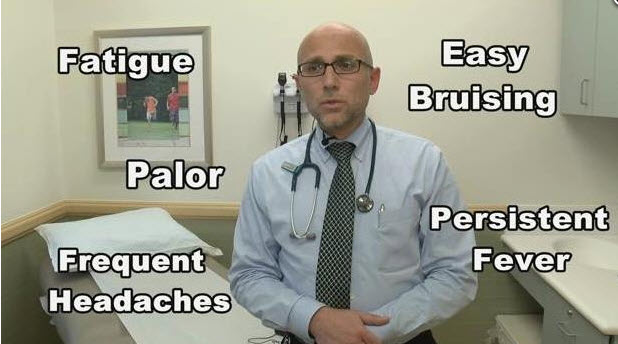Red flags to help spot childhood cancer
Statistically, childhood cancer is relatively rare. Yet, cancer remains the number one disease killer of children in this country.
So, if the best way to fight cancer is to find it early, then knowledge is power.
Healthwise, we look at the red flags of childhood cancer that should at least take a child to the doctor to rule it out or begin treatment.
Dr. Mohamed Al Rahawan, a Pediatric Oncologist and Texas Tech Physician, says, "The symptoms are many. The most common are frequent headaches, trouble with a fever that doesn't go away, easy bruising, pale, fatigue. All those can be a sign of cancer."
He adds that in a typical year, Lubbock doctors see between 40 to 50 new cases of childhood cancer. More red flags would include unexplained weight loss or a mysterious lump or bumps on the body.
So how long do you wait, and watch, before asking could it be cancer?
Dr. Al Rahawan says, "The key here is if it persists for a while, and the while I define as two weeks."
That's not a timeline for cancer. He explains that it's just a reasonable time to begin further evaluation.
Time is not just important in terms of how long a problem persists. The time on the clock matters too, especially when regular headaches show up every morning.
He explains, "Morning headaches are concerning. That is because when kids lay down, the pressure in the head increases and typically will start morning headaches."
There's one more unique sign that may point to cancer. When you point a camera and shoot with a flash. Dr. Al Rahawan describes it like this, "If you have a white pupil, a reflection that's not pink or red, a white reflection is a cancer sign for eye cancer called Retinoblastoma."
Now, before you study your pictures in a panic, remember, it's a consistent white glow in one or both eyes that may be a clue to cancer, or at least suspicious enough to show your doctor.
Fifty years ago, the survival for childhood cancer was just 10 percent. Today it's nearly 90 percent.
That is a significant improvement! The National Cancer Institute says that is also a strong reminder that the best way to fight childhood cancer is with awareness and early detection.
Related Stories
Celebrating Veterans: TTUHSC’s General Martin Clay’s Legacy of Service and Leadership
From his initial enlistment in the Army National Guard 36 years ago to his leadership in military and civilian health care management roles, Major General Martin Clay’s career has been shaped by adaptability, mission focus and service to others.
Texas Tech University Health Sciences Center School of Nursing Named Best Accelerated Bachelor of Science in Nursing Program in Texas
The TTUHSC School of Nursing Accelerated Bachelor of Science in Nursing (BSN) program has been ranked the No. 1 accelerated nursing program in Texas by RegisteredNursing.org.
TTUHSC Names New Regional Dean for the School of Nursing
Louise Rice, DNP, RN, has been named regional dean of the TTUHSC School of Nursing on the Amarillo campus.
Recent Stories
TTUHSC Cancer Researcher Honored by National Academy of Inventors
C. Patrick Reynolds, M.D., Ph.D., director of the School of Medicine Pediatric Cancer Research Center at TTUHSC, has dedicated his life as a researcher to developing treatments for childhood cancers.
TTUHSC School of Nursing Celebrates 10 Years of the Veteran to BSN Program
The TTUHSC School of Nursing recognized the 10-year anniversary of the Veteran to Bachelor of Science in Nursing (VBSN) program during the fall 2025 commencement ceremonies held Dec. 13 in Lubbock, Texas.
TTUHSC Dean to be Inducted into the National Academies of Practice as Distinguished Fellow
Gerard E. Carrino, Ph.D., MPH, dean of the TTUHSC Julia Jones Matthews School of Population and Public Health, will be inducted into the National Academies of Practice (NAP) as a Distinguished Fellow of the Public Health Academy.

